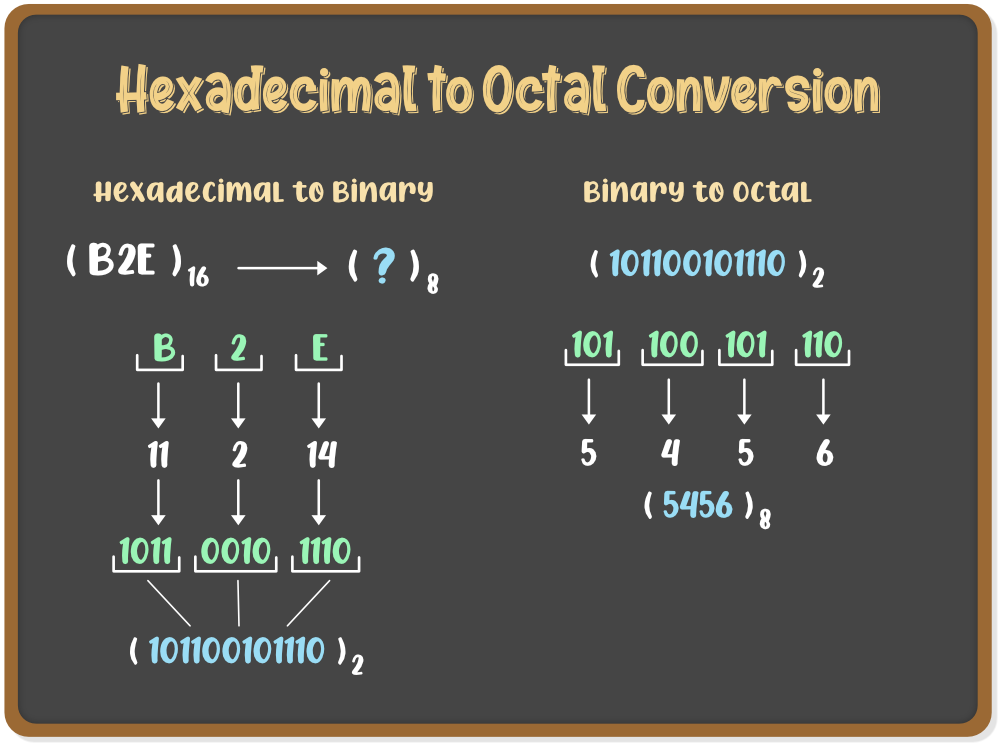HEXADECIMAL NUMBER SYSTEM CONVERSION
1.HEXADECIMAL NUMBER CONVERSION
Number System with base value 16 is termed as Hexadecimal Number System. It uses 16 digits for the creation of its numbers. Digits from 0-9 are taken like the digits in the decimal number system but the digits from 10-15 are represented as A-F i.e. 10 is represented as A, 11 as B, 12 as C, 13 as D, 14 as E, and 15 as F. Hexadecimal Numbers are useful for handling memory address locations.
*HEXADECIMAL NUMBER SYSTEM TO BINARY NUMBER SYSTEM;
Hex numbers are represented in base 16, but the binary numbers are of base 2. Hence, to convert a hexadecimal number to a binary number, the base of that number is to be changed. Follow the steps given below:
- Step 1: Convert the Hex symbols into its equivalent decimal values.
- Step 2: Write each digit of the Hexadecimal number separately.
- Step 3: Convert each digit into an equivalent group of four binary digits.
- Step 4: Combine these groups to form the whole binary number.
EXAMPLE: (B2E)16 is to be converted to binary

*HEXADECIMAL NUMBER SYSTEM TO DECIMAL NUMBER SYSTEM;
Hexadecimal numbers are represented in base 16 but the decimal numbers are of base 10. Hence, to convert a hexadecimal number to a decimal number, the base of that number is to be changed. Follow the steps given below:
- Step 1: Write the decimal values of the symbols used in the Hex number i.e. from A-F
- Step 2: Multiply each digit of the Hex number with its place value. starting from right to left i.e. LSB to MSB.
- Step 3: Add the result of multiplications and the final sum will be the decimal number.
Example: To convert (8EB4)16 into a decimal value

*HEXADEIMAL NUMBER SYSTEM TO OCTAL NUMBER SYSTEM;
Hexadecimal numbers are represented in base 16, but the octal numbers are of base 8. Hence, to convert a hex number to an octal number, the base of that number is to be changed. Follow the steps given below:
- Step 1: We need to convert the Hexadecimal number to Binary first. For that, follow the steps given in the above conversion.
- Step 2: Now to convert the binary number to Octal number, divide the binary digits into groups of three digits starting from right to left i.e. from LSB to MSB.
- Step 3: Add zeros prior to MSB to make it a proper group of three digits(if required)
- Step 4: Now convert these groups into their relevant decimal values.
Example: (B2E)16 is to be converted to hex

MORE DETAILS;
Comments
Post a Comment